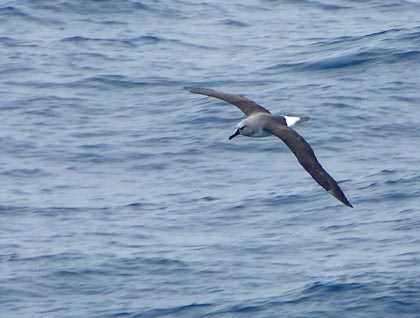Anticipation! It began when we booked the trip way last whenever, perhaps seduced by photos in the brochure, by heroic tales of explorers in a primal battle with the elements, or by a life-long desire to reach all seven of the world's continents. We are actually going to Antarctica, even if some of our friends and relatives think we are nuts!
Anticipation increased as departure drew near, and we amassed the hats, gloves, and boots, and struggled to fit it all into the suggested weight allowance. We gathered in Buenos Aires, and the level rose another notch. Finally, we have reached National Geographic Explorer in Ushuaia, and we are on our way, sailing where Fitzroy and Darwin sailed before us. We then turned south, passed Cape Horn, and entered the Drake Passage.
Excited anticipation is tinged with a certain fear of this notorious body of water. The Dreaded Drake? Pshaw! The Drake was in an unexpectedly benign mood, and all but the very most sensitive to ocean motion actually enjoyed our passage to the south. We renewed our acquaintance with the features of our cameras, listened to a presentation on the seabirds of the Southern Ocean, and added to our list of species seen and identified: from the tiny storm-petrels (Wilson's and black-bellied) dancing over the swells to the magnificent albatrosses (black-browed, gray-headed, light-mantled, wandering, and royal). These birds are using the energy of the wind to soar effortlessly in the process we call dynamic soaring. Ah, that we humans could do the same!
In the afternoon, our ship crossed the oceanographic and biological boundary of Antarctica: the Antarctic Convergence, where cold, Antarctic seawater meets warmer Subantarctic water. Now it can be said that we have truly reached Antarctica. Well-deserved congratulations were exchanged.
To punctuate the moment, the first iceberg of our trip was spotted. We deviated for a close look. It was a tabular berg with a flat top and vertical sides. Tabular icebergs are made of glacial ice that has flowed down from the Antarctic Continent and floated out over the sea as part of a floating ice shelf, where it acquires its flat top. Occasionally, a large piece breaks off the ice shelf, to circulate around the Southern Ocean until it goes aground in relatively shallow water. The water here was quite deep; our iceberg was afloat, with swells crashing against it and a large number of birds feeding in its wake. Gradually, the waves, water, and the incessant winds will shrink the iceberg. It will lose its definition and, eventually, the water will return to the ocean from which it came, eons ago.







